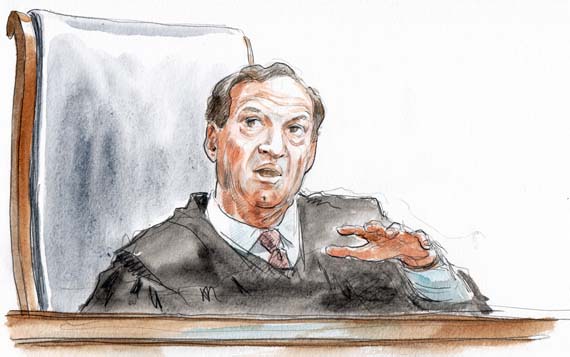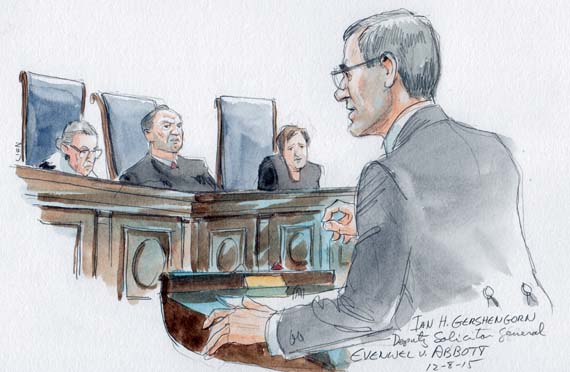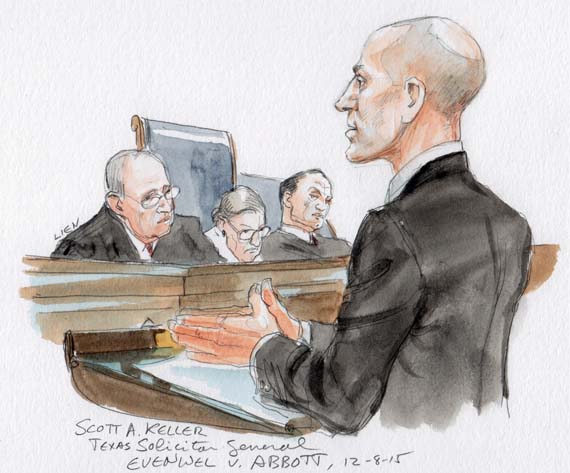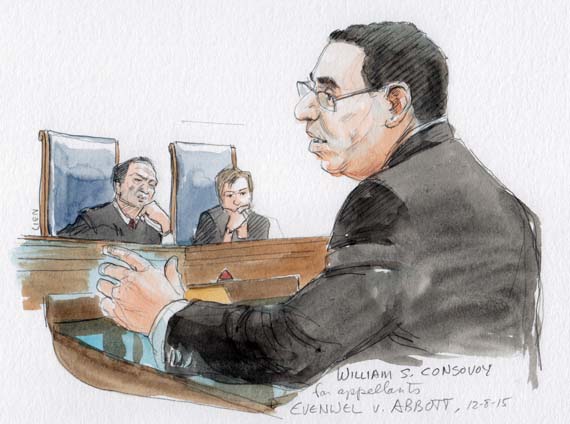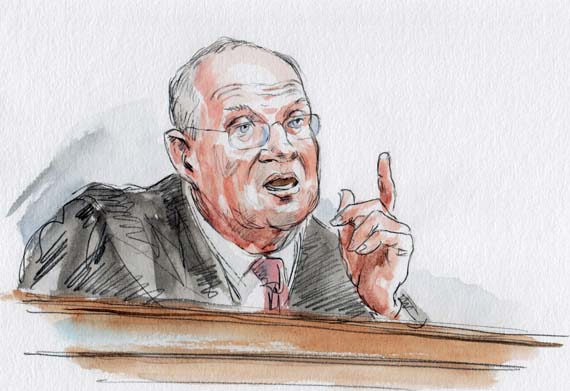Argument analysis: The choice — be bold or practical

on Dec 8, 2015 at 1:42 pm
Analysis
The Supreme Court does not shy away from being bold, at least some of the time, but sometimes the temptation is overcome by real-world practicality. That’s the way the Court seemed to be leaning on Tuesday when it considered throwing out the basis for drawing election districts for thousands of state and local legislative seats across the country, and starting over with a new standard. The problem: no one had a solid idea of how to make an alternative approach actually work.
The argument in Evenwel v. Abbott involves as fundamental an issue for a democracy as can be imagined: is everyone represented in elected governments, or are those eligible to vote entitled to special influence and the political power making that possible? The reason that such a choice is just now arising is that it is controlled by the half-century-old constitutional principle of “one person, one vote,” but the Supreme Court has never specified how to measure that equality.
For decades, the states have opted to divide up legislative seats, at the state and local level, by starting with total population, dividing that by the number of seats at stake, and then (with some modifications) coming up with roughly equal district populations. With modern census data and advanced computers, it is possible to come very close to mathematical parity — although the Court has allowed legislatures to come within ten percent of that, if they are making allowances for such permissible things as respecting county and city boundaries and even, to a degree, protecting incumbent lawmakers.
In fact, the principle of “one person, one vote” has been understood as equality of districts, rather than voters, on the theory that everyone placed in each district — whether eligible to vote or not — is entitled to be represented by the winner. But there is a political movement now, increasingly active, that is pushing for the famous phrase to mean voter equality, so the process would start with making sure that those who are qualified to vote should wind up with roughly equal numbers in each district.
If there is great disparity between the numbers of eligible voters between districts, the theory goes, there is no voter equality: those in districts with fewer voters have considerably more clout, at election time, than those with many voters — even if the districts’ total populations are equal. A district over-populated with voters is said to dilute the ballot strength of each, compared to some other districts’ residents.
This equality theory was neatly captured by Justice Samuel A. Alito, Jr. — although it was not clear whether he was really tempted to embrace it, or was just exploring its meaning. Suppose, he said, there was a rural district in which only nine percent of the population could vote, because its overall population is swelled by a large prison and none of the inmates can vote, but there is another district with about the same total population, but ninety percent of its residents can vote. “Is that okay?” he asked a federal government lawyer, Deputy Solicitor General Ian H. Gershengorn.
Gershengorn responded that the courts have recognized that legislatures, in drawing new districts, are entitled to rely on census data — that is, total population figures. There is no existing way, Gershengorn would go on to say, for the census to provide data that would aid legislatures in dividing up seats according to voter figures without simultaneously winding up with major differences in total populations. That, he indicated, would skew district population differences.
The theory was regularly disparaged by the more liberal Justices on the Court, who made clear they were not about to let the concept of representation be changed so that only voters were the constituents who counted in the writing of the laws. At least, they were not willing to make it unconstitutional to use total population as the starting point in redistricting, and mandating as the only constitutional norm the near-equality of voter populations among districts.
But the closest that any member of the Court came to suggesting serious consideration of the theory was Justice Anthony M. Kennedy, in a couple of remarks that were potentially telling. Most significantly, he asked Texas Solicitor General Scott A. Keller, who defended Texas’s use of total population: “Why does it have to be one or the other?” Both concepts, he said, may be worthy.
Kennedy obviously was reacting to an argument that was stressed at the very outset on Tuesday, by Arlington, Va., lawyer William C. Consovoy that, in drawing up new election districts for Texas’s thirty-one state senate seats, the total population metric resulted in nearly a fifty-percent difference between the number of eligible voters in some districts compared to others. At most, Consovoy had later suggested, such a voter disparity should be closer to ten or twenty percent, at most.
Kennedy could see at least the surface appeal of that spread (as a Justice, he is constitutionally devoted to equality principles), and wanted to know why legislatures could not strive for equal districts and equal distributions of eligible voters. Why, he asked Keller, is Texas not required to accommodate both interests? Keller’s response was the same as Gershengorn’s: district map-makers, he said, have to rely on census data, “and all we have is total population.”
Kennedy next wondered if there were any studies about trying to achieve both. Keller said he knew of none, and Kennedy dropped this line of inquiry. A bit later, Keller added that, if the Court were to require a voter-based standard, that would wreak havoc with traditional districting principles, such as showing respect for local government boundaries.
Chief Justice John G. Roberts, Jr., wondered how often it happens that voter equality is so widely varied between districts, and the answer was that it probably is not very often.



